Double storey extensions - architects explain how to go full height in style
Double storey extensions are mammoth projects, and you want to get them right. Design experts explain how to create the most amazing home addition
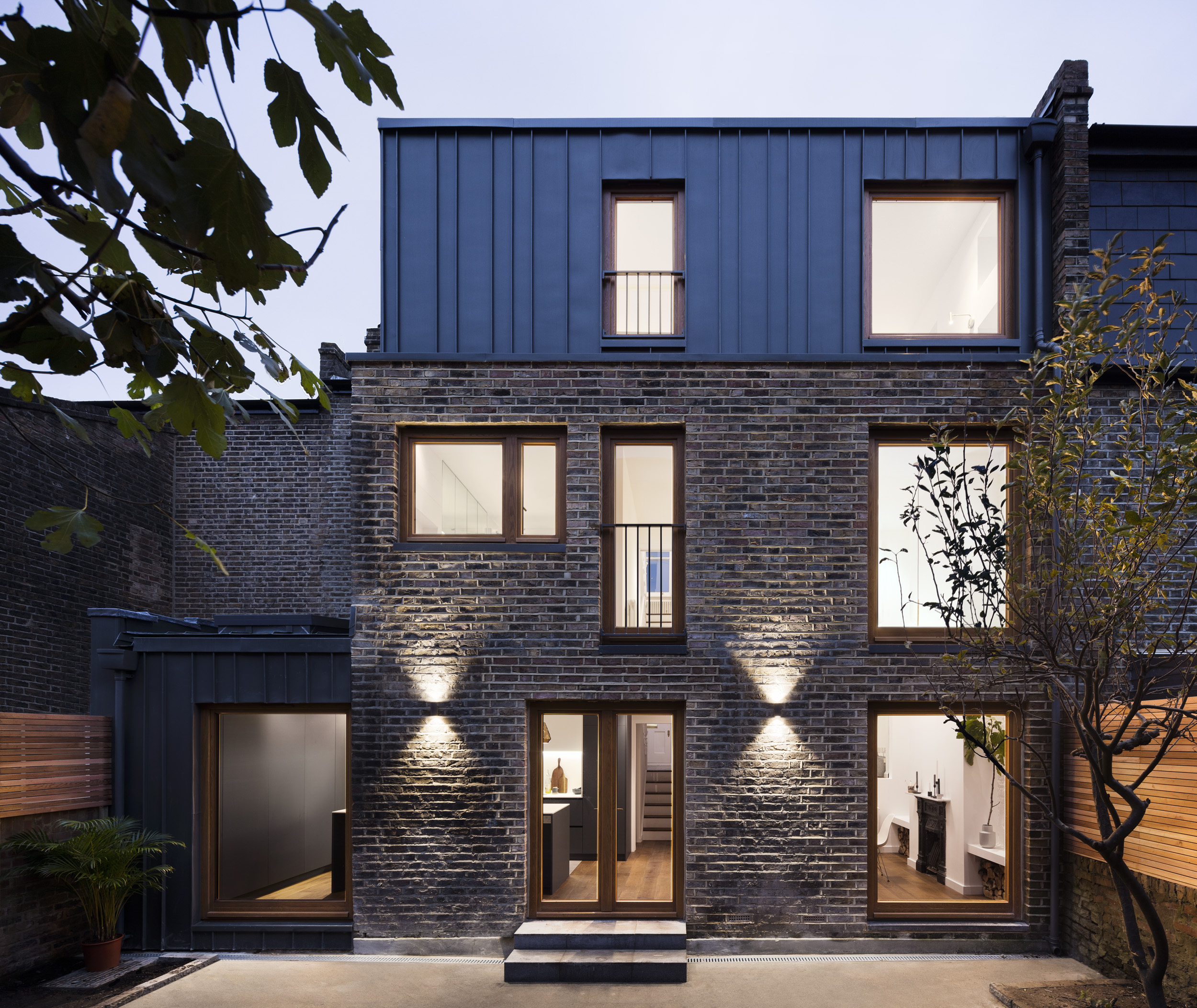

Double storey extensions can improve interiors to make homes work for the way we live now. They can allow you to create an open-plan living space, larger kitchen and dining room, home office, extra bedrooms, bathrooms or en-suites. With multi-generational living on the increase, it could be a space for elderly parents, or children coming back from university.
Extending and reconfiguring means you can streamline the rooms to get a better flow and create a better connection to the garden. Creating new rooms that fully integrate into your home is the key to a successful double storey extension. The living areas of the house downstairs should be accessible from the main entrance hall and rooms such as the kitchen and dining area should be placed near to each other.
Most double storey extensions will be at the rear of the house but if you live in a corner house, a double storey at the side of the property could be possible. Semi-detached houses and bungalows are also perfect for extending as they often have larger gardens, so there is more space to extend. Converting or building on top of a garage is another option and could be more cost effective than knocking down the old garage and building a new two-storey extension from scratch. Seek advice with the local planning office and zoning regulations will need to be checked.
‘A lot of people choose to improve rather than move because it is often cheaper to extend,’ explains Ben Hawkins, architect at Granit Architecture + Interiors. ‘When you consider the added cost of buying what is usually a larger property, sales tax, and purchase moving costs, the numbers often don't add up. However, an extension will always be unique to you, your budget and your current house.'
As with any extension ideas, the double storey addition isn't something you just rush into, however. Here's how the experts get it right.
Double storey extensions - everything you need to know
1. Keep window frames thin
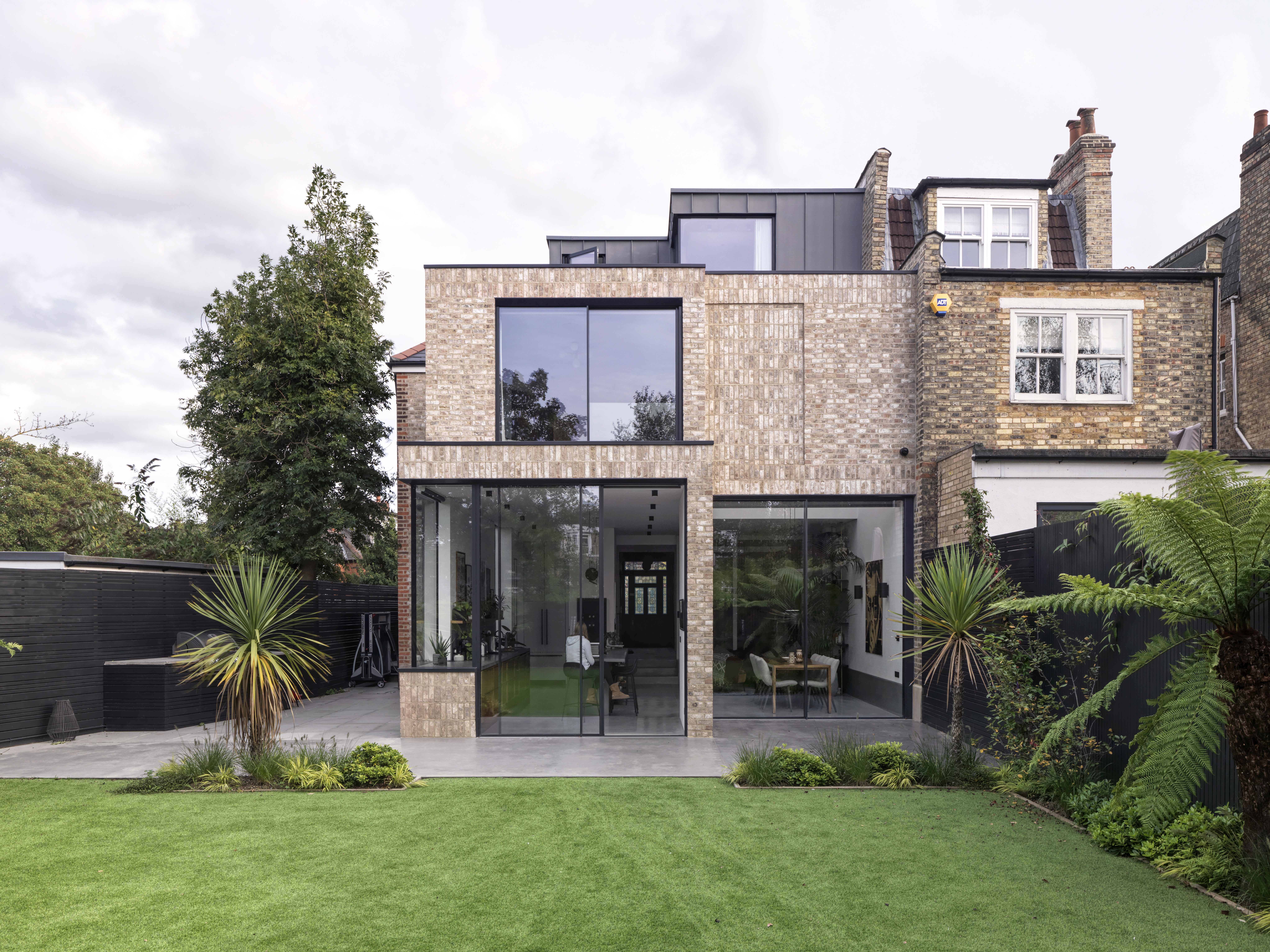
The beauty of starting from scratch is you can design a home that fits with modern sensibilities. This is a double height rear extension and loft conversion. It has minimal window frames and slim sliding doors to create a strong connection with the outdoors, while flooding the living space with light. There are also sliding doors on the upper floor. A similar colour scheme was used for the exterior so that it merges with the existing house.
Double storey extensions will need substantial foundations and structural work, so it will be more expensive than a single storey extension. But certain costs, such as design, planning and materials are the same or similar for both, and a roof is needed for a double or single extension, so in the long run a two-storey extension could be more cost-effective per square foot.
Adding a bedroom or bathroom, or both, can dramatically increase the house value, so it’s always worth considering. ‘All extensions need to have foundations whether they are built from brick, block or timber,’ explains David Conlon, founder of design studio En Masse Bespoke. ‘Frameless glass panels, zinc or rendered panels all need a calculated foundation which should be worked out prior to construction and in line with the local zoning authority criteria.’
2. Consider the roof height
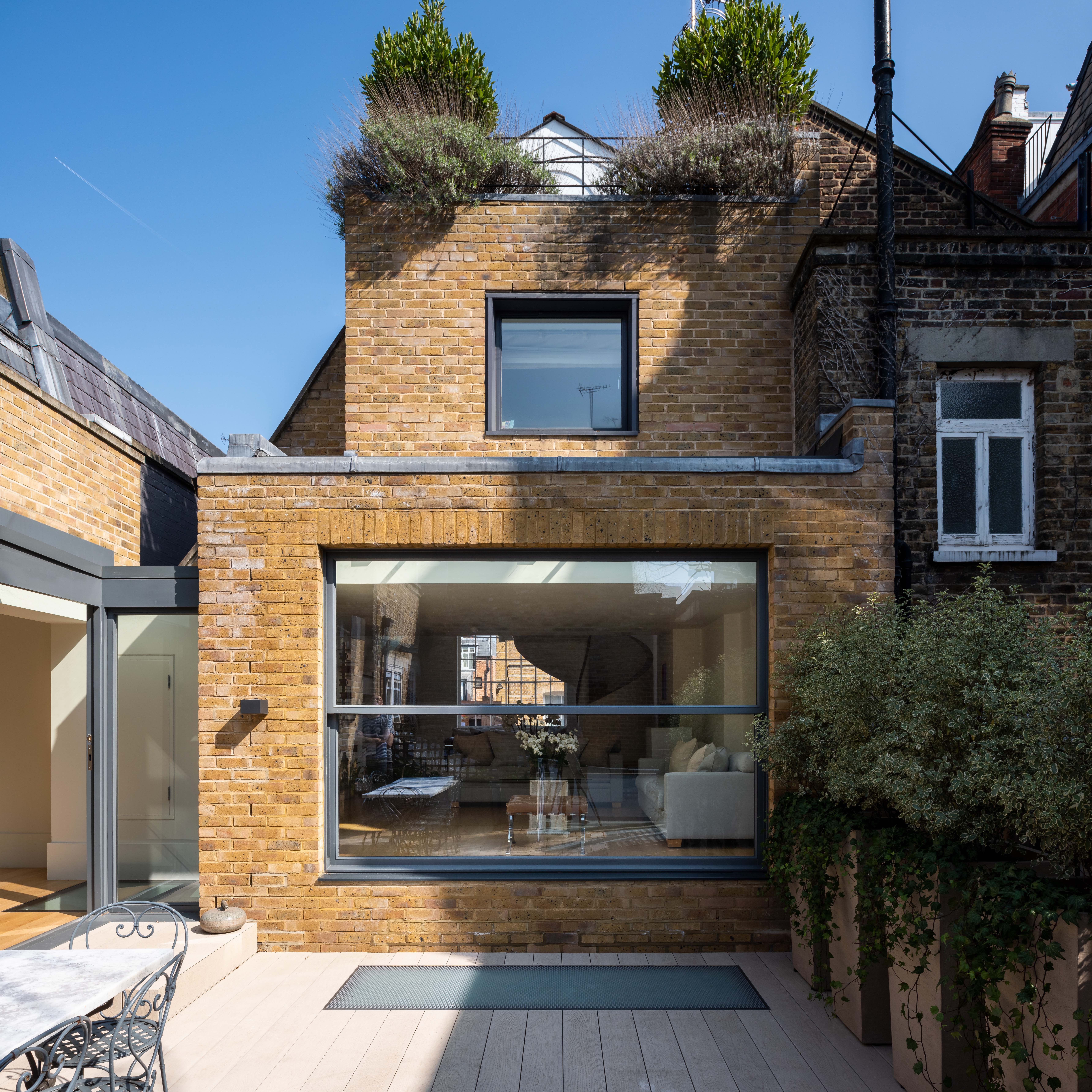
Design by Studio Bua
This property is one of two townhouses, where a brick and frameless glass extension was designed to create a bright and minimal interior. A glass link runs between the two houses and is framed in cladding. It also includes a first floor terrace with a walk-on roof light which brings light into the master bedroom below
The main limitation on two-storey extensions is usually the roof height. Planning policy typically requires an extension to be subordinate to the existing house, so the height of the ridge and eaves may need to be set lower than the existing roof.
‘Where a building has low ceilings, it can be difficult to build an extension tall enough to integrate two full (7.8 feet) storeys,’ explains Mark Smyth of Studio Bua. ‘However, it is possible to have lower ceiling heights in the new rooms, especially at first floor level, partially integrating upstairs rooms into the roof space or setting the extension down slightly in the ground. A shallow pitched roof can cover a large extension without being too tall, but this is not always acceptable, especially on a period building or in a conservation area. A flat roof can cover an area of any size but it is not usually considered acceptable for a two-storey extension, unless part of an overall contemporary design scheme of significant architectural merit.’
Other solutions for covering large extensions without too much height include creating a series of intersecting traditional pitched roofs (at an angle of between 40 and 55 degrees) or having an area of flat roofing ‘hidden’ behind a more traditional pitched roof.
3. Create a flow between new and existing parts of the home

Design by AG Architecture
This project comprises a side and roof extension on a terraced house. A new open-plan kitchen, dining and living area has been created on the ground and lower ground floor arranged over an open series of half-levels to exploit the volume and light. Zinc was used on the side and roof extension as it blends well and has the ability to resist continued corrosion. It is also environmentally-friendly and 100% recyclable.
‘The flow between new and old spaces in a double storey extension should be as natural as possible for the extension to be successful,’ says Pereen d’Avoine, founder of architecture firm Russian for Fish. ‘Ensuring floor levels in the new extension match those of the original house will make the new rooms feel like part of the old house. Similarly continuing moldings, skirting boards, door furniture and color schemes will create a harmonious flow. And think about continuing the flooring into the garden to make it look like one space to merge the indoor and outdoor spaces.’
4. Don't obstruct sight lines
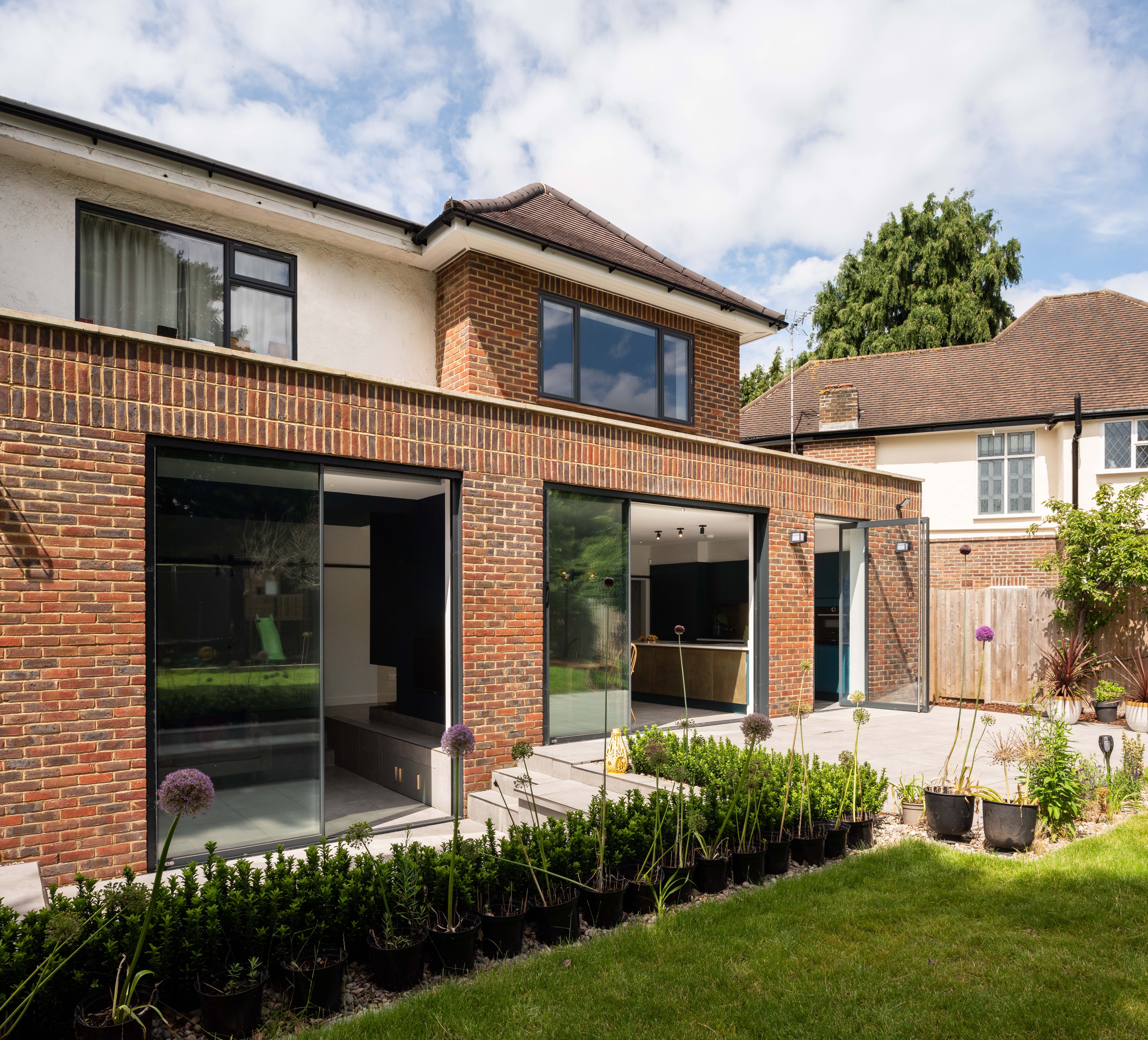
In this 1920’s house there was insufficient room to use the existing loft, so a two- storey side and rear extension was built to create a new master bedroom, walk-in wardrobe and ensuite.
The ground floor living space was enlarged to accommodate a new study, playroom and separate utility room. The house benefits from a large plot but it was orientated to the street, with small openings to the rear.
The addition flips the focus from the front to the rear garden with a series of slim, aluminum glazed doors and a new terrace level with the internal floor. The ground floor has been designed as a series of interconnected rooms with clearly defined zones to prevent it from feeling completely open.
The spatial planning allows views to and from each of the interior spaces. It has been made very clear where the existing house starts and stops, with sliding barn-style doors between the old house and the extension to separate the zones if required.
5. Incorporate the side of the house as well
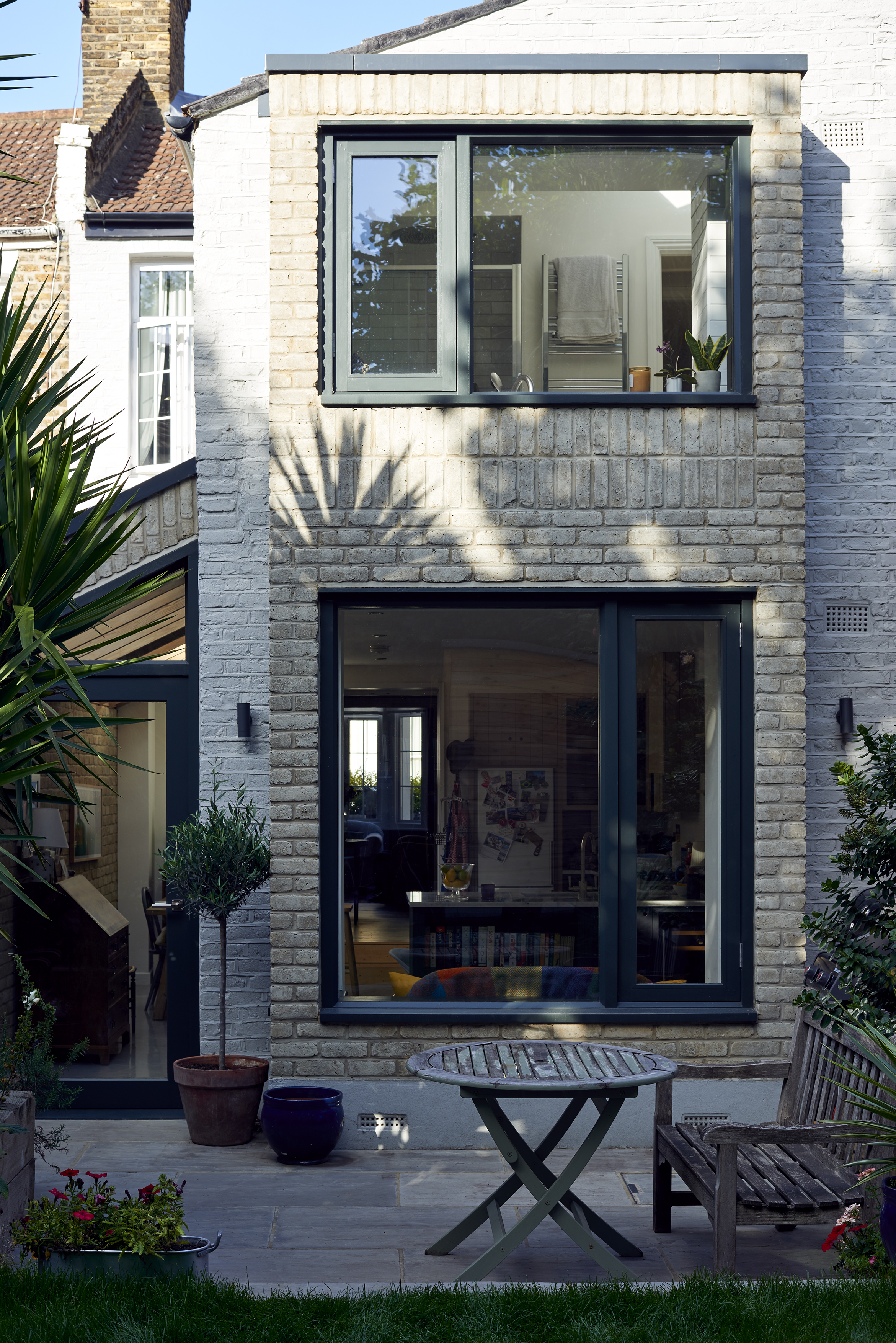
.This house had a sunny, west-facing garden but the ground floor felt dark with a limited connection to the garden. The family wanted a larger, lighter and more sociable living space for their family.
The side passage of the Victorian terrace was incorporated which created more space but created a middle room with no direct window to the outside, so this was made into a boot room, utility room and downstairs loo and storage space. Then the rest of the room was opened up to the staircase to create a generous entrance lobby. This meant long views were opened up from the front of the house to the garden. A double height modern window bay fills the interior with light.
How much value does a two-storey extension add?
If you are purely thinking about it from a re-sale point of view, it all depends on how big the extension is, what house prices are like in your area, how long you intend to stay in the house and how much space there is to extend. It might be an idea to look at other houses locally with the same footprint as your home to get an idea of what can be achieved and the costs involved, and call in a local realtor for their advice. However, if you have children at school locally, there are good transport links for work but you need more space, or the house doesn’t work for you as a family, then an extension could make all the different to the way you live.
‘It’s much more difficult to remain within permitted development rules or to secure planning consent for two storeys but it will usually add more value than it costs to build, especially if you can add bedrooms and bathrooms as well as living space to the plan,’ says David Money of David Money Architects. ‘The resulting form will greatly affect the function and character of your home, so the quality of the design is crucial. You must take care not to diminish the quality of the existing accommodation in the process of extending, so ensure that plentiful natural light is maintained, by roof windows if necessary. We often propose a partial width first floor extension over a full-width ground floor extension so that a large roof window can illuminate the ground floor and a first floor window can be retained on the original building line. There is a finite limit to the value of your home, but when the time comes, you only need to find one buyer who absolutely loves it and is willing to pay for the quality of the design, and in the meantime you get to live in a home that is just right for you.’
Is it cheaper to build an extension or move?
Whether it is cheaper to build an extension or move depends on many factors, so look at the reasons you want more space and how long do you intend to stay there.
Firstly ask advice from a local realtor who knows the market about how much value an extension will add to the house and the price of bigger houses in the area. Work out how much you want to spend on an extension and how much it would cost to move.
Then maybe ask yourself these questions:
Will structural changes need to be made to achieve the desired extension? This could involve rearranging internal walls and adding doors.
Will you need a better heating system?
Will you need to re-wire?
Will the kitchen and utilities need to be moved?
Will you need to move out for the duration of the works?
Will you need to landscape the garden afterwards?
‘The construction cost of an extension can vary significantly depending on the choice of materials and fixtures. You could potentially double the spend if high-end fittings are selected throughout,’ says Billy Sinclair of Sinclair Studios. ‘But it’s not only about the cost. The time and effort involved in an extension project is significant but you get the opportunity to create something that is uniquely tailored to you and your family. If you are going to be living in a home for the foreseeable future we believe this is something worth investing in.’
Be The First To Know
The Livingetc newsletters are your inside source for what’s shaping interiors now - and what’s next. Discover trend forecasts, smart style ideas, and curated shopping inspiration that brings design to life. Subscribe today and stay ahead of the curve.

Alison Davidson is well-respected British interiors journalist, who has been the Homes Editor of Woman and Home magazine, and the Interiors Editor for House Beautiful. She regularly contributes to Livingetc, and many other titles, and often writes about kitchens, extensions, and decor ideas. She is the go-to for information about green energy, sustainable home improvement and eco design ideas.
-
 5 Bathroom Layouts That Look Dated in 2025 — Plus the Alternatives Designers Use Instead for a More Contemporary Space
5 Bathroom Layouts That Look Dated in 2025 — Plus the Alternatives Designers Use Instead for a More Contemporary SpaceFor a bathroom that feels in line with the times, avoid these layouts and be more intentional with the placement and positioning of your features and fixtures
By Lilith Hudson Published
-
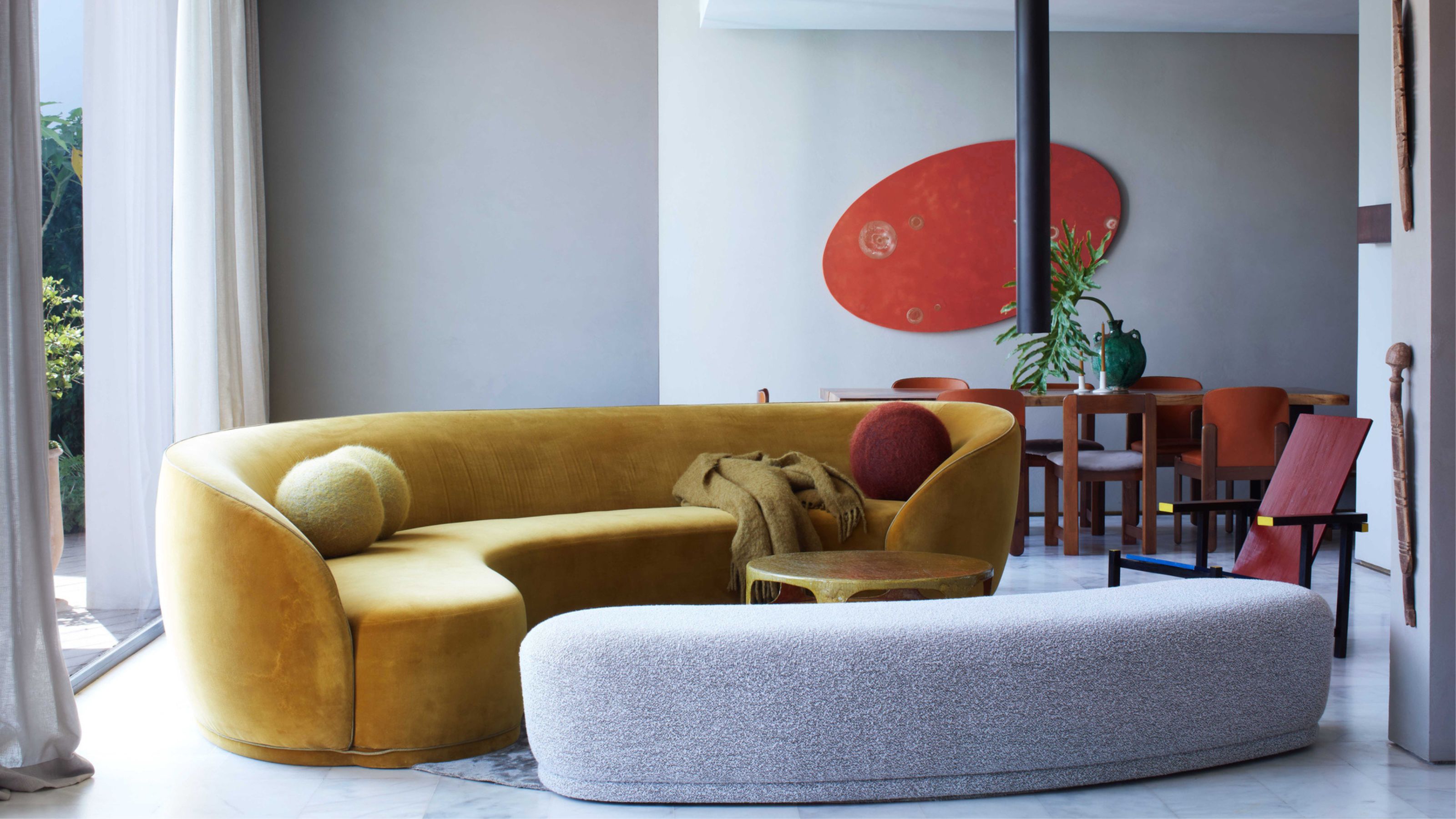 Why Decorating With Mustard Yellow Helps Fill Your Interiors With a Sense of "Confident Calm"
Why Decorating With Mustard Yellow Helps Fill Your Interiors With a Sense of "Confident Calm"There is so much more to decorating with this turmeric-tinted sauce-wiggled-on-a-hotdog not-quite-yellow shade than meets the eye
By Amy Moorea Wong Published